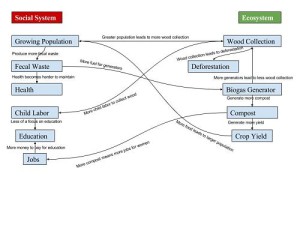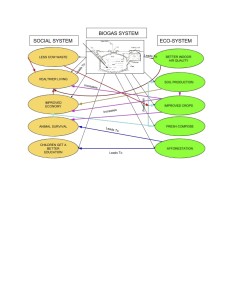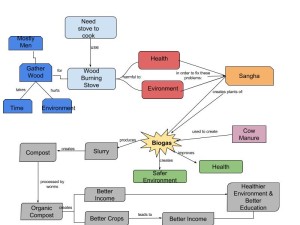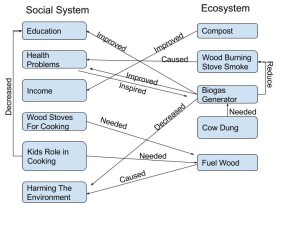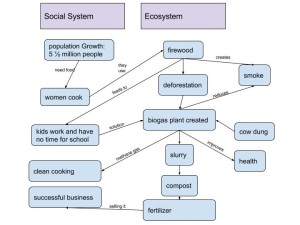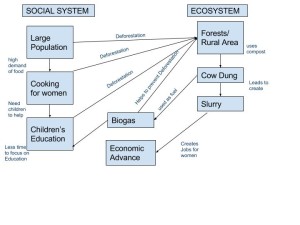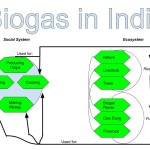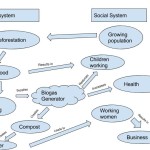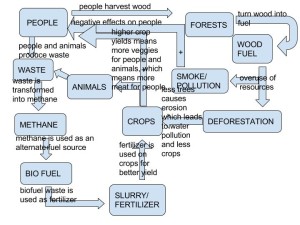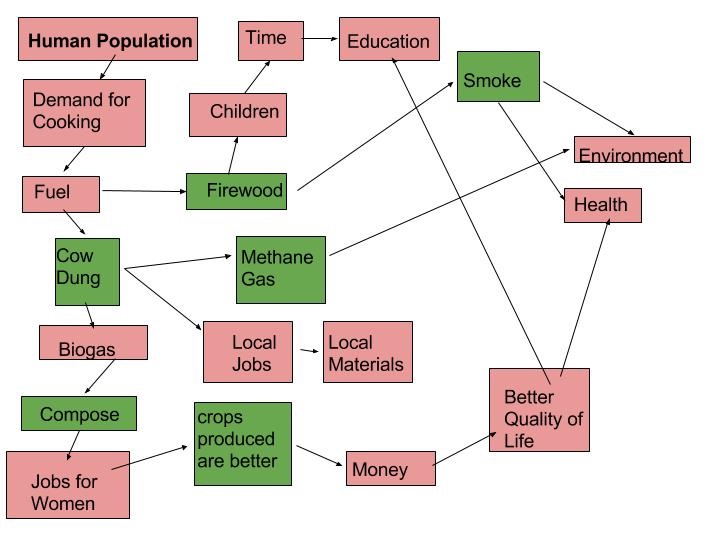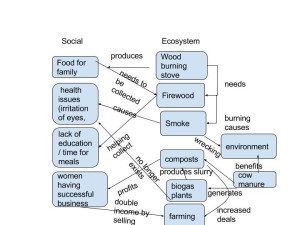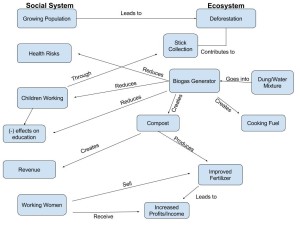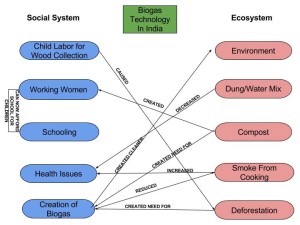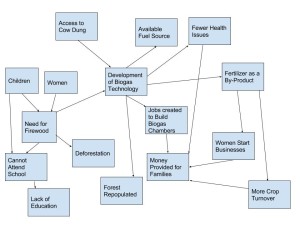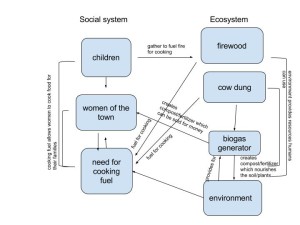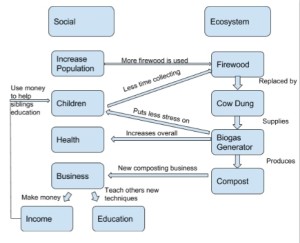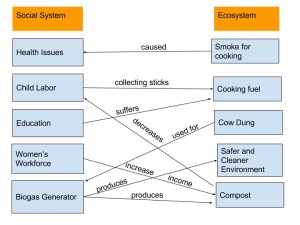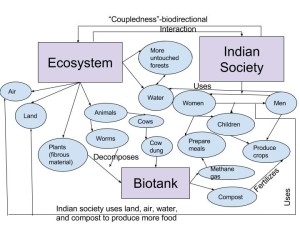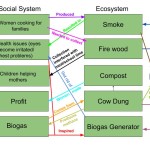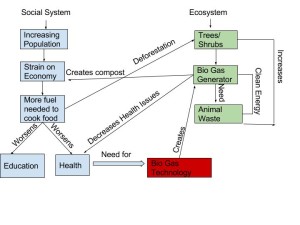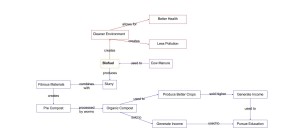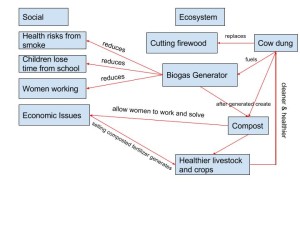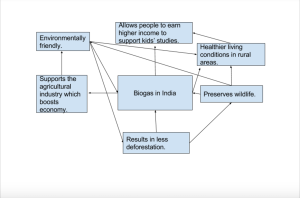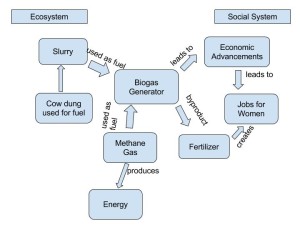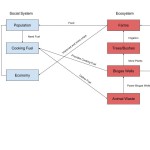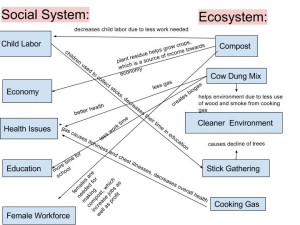My systems diagram shows how the innovative biogas generator produces a coupled human- environment interaction. Cow dung taken from the environment and used as fuel for the generator overall produces a better human, social system. When humans use the generator to cook they are not using a wood fire smoke technique that would produce harmful pollution into the environment. Therefore, again, the cow dung from the environment is a way that the environment is impacting humans, and then humans are making a positive impact back on the environment.
One symbol I used throughout my diagram was plus and minus signs. The minus sign represents the word less or shows a reduction. For example less household smoke produces a cleaner environment. The plus sign represents more so another example: people that will gather firewood for their wood fire, that don’t have a biogas generator, will cause more deforestation. I tried to represent every aspect of the environment or social system that the video described. The ultimate goal of a picture like this would be to show people that a biogas generator has a positive feedback loop. Once other people see how positively the generator is impacting the environment it will lead to more people using the generator, as D Vidya Sagar plans on building an additional 50,000 generators.
My diagram reflects the one in “What is Human Ecology,” in the way that myself and Marten have both made separate columns to classify components of the social system and the ecosystem. Both diagrams show how each system relies on the other system. I tried to make my diagram less cluttered by using the plus/minus symbols whereas Marten described what his arrows represented in more depth. He also described how the generator would benefit poor vs. wealthy people, whereas I focused on how it could benefit people in general. With two different comparisons of the generator there is more opportunity for other benefits of the generator to arise that one author might not have realized.

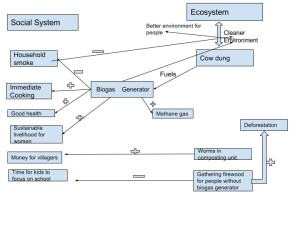
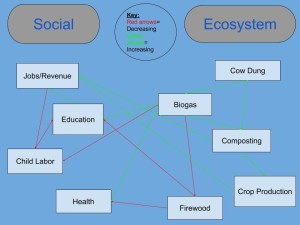
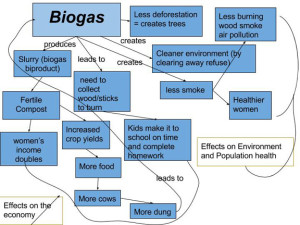
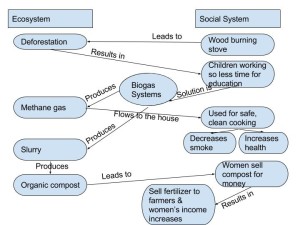
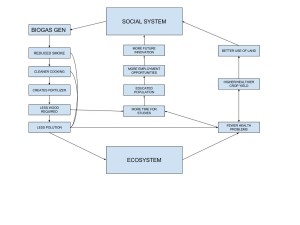
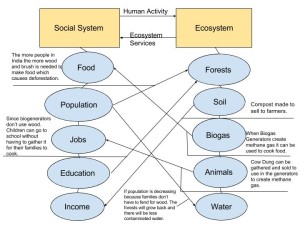
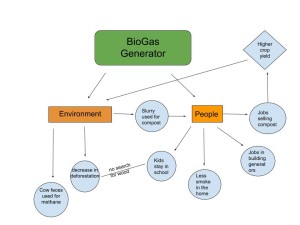

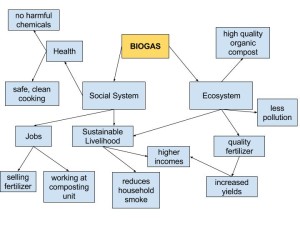
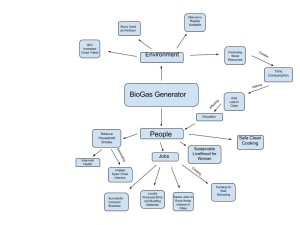
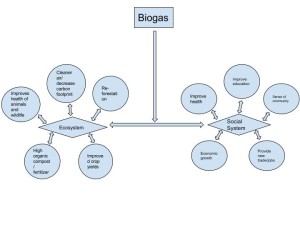
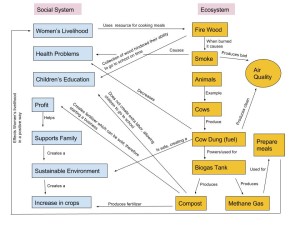
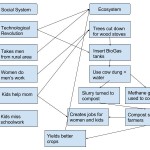
 of the culture. Marten’s is a more broad diagram while this pertains to only one instance. What can be learned here is that environments and systems are inherently different around the world. There is not general chart for all of them, but many operate in similar ways.
of the culture. Marten’s is a more broad diagram while this pertains to only one instance. What can be learned here is that environments and systems are inherently different around the world. There is not general chart for all of them, but many operate in similar ways.